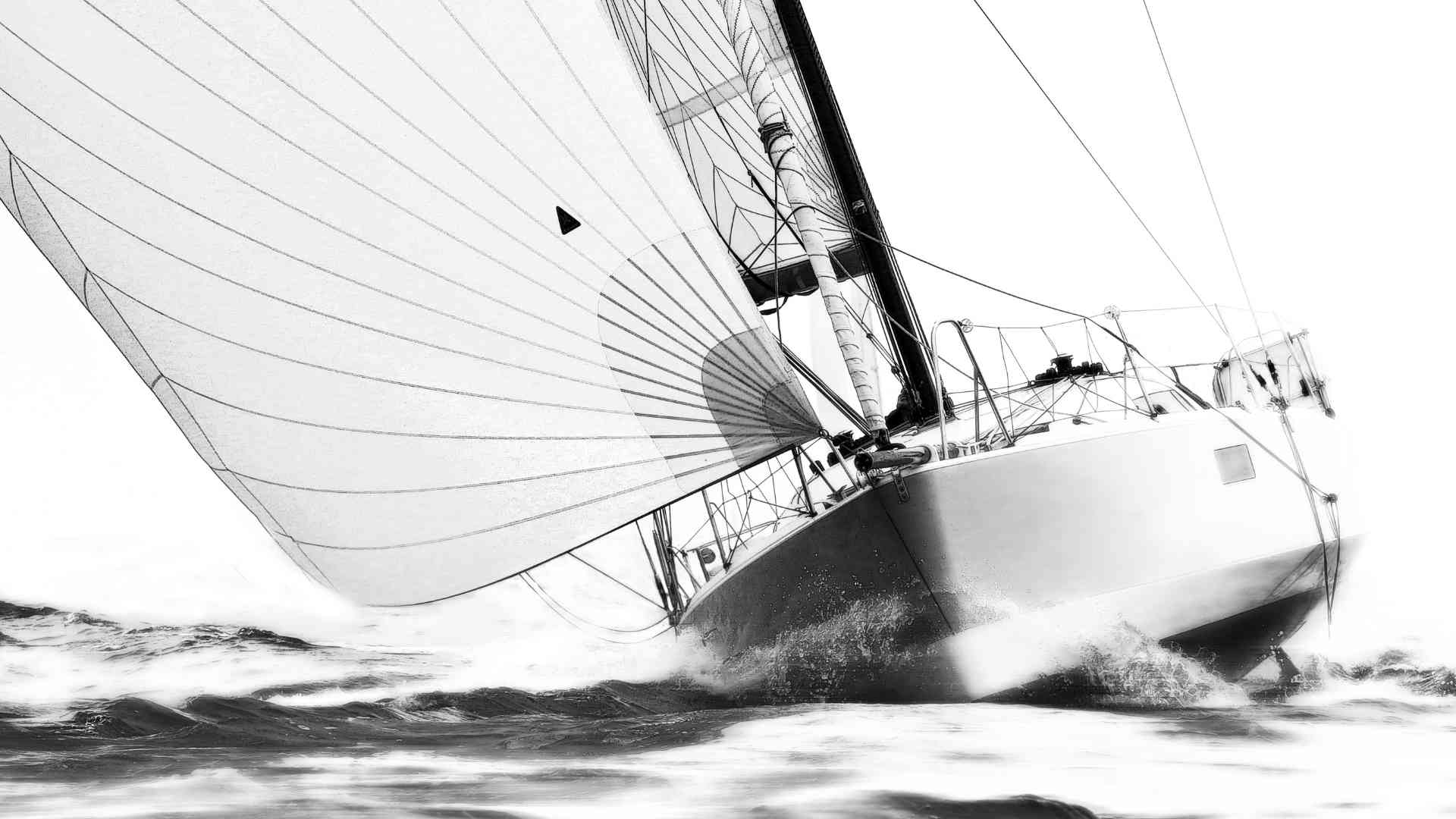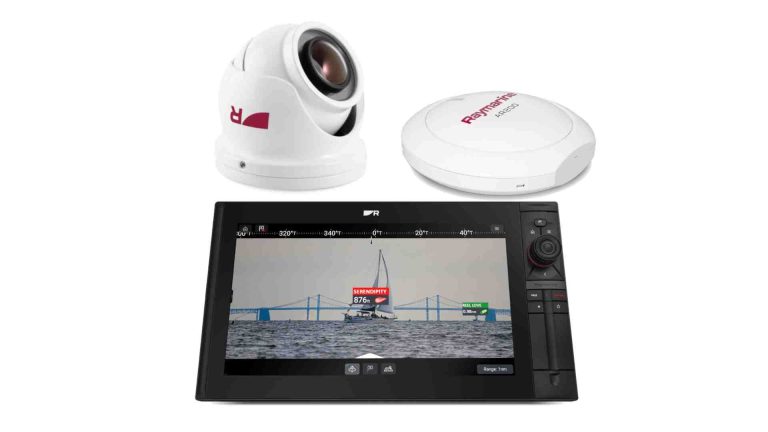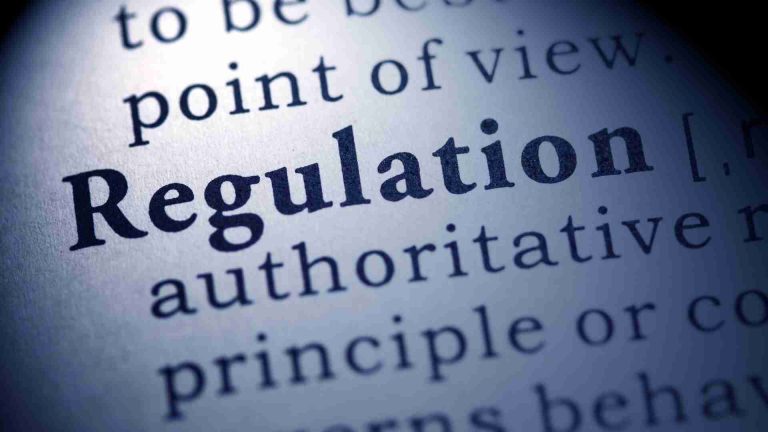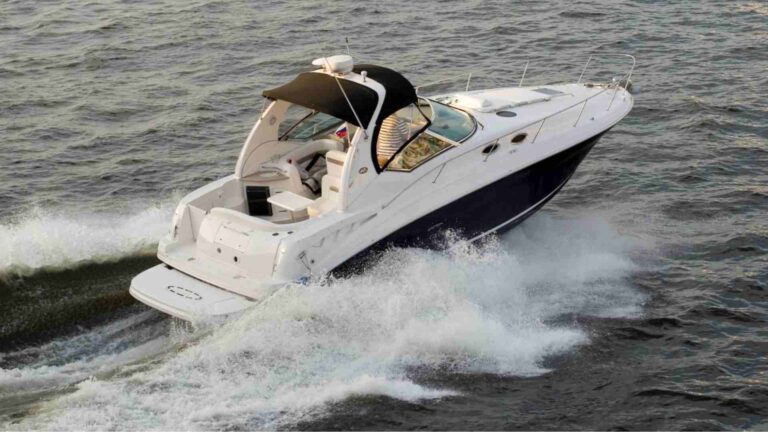Do Sailboats Have Motors? Compare Motor Types
Discover if sailboats have motors, explore types like gas, diesel, electric, and hybrid, and compare their uses, benefits, and costs for optimal sailing.
Sailboats are synonymous with the romance of harnessing the wind to glide across the water, but many modern sailboats are equipped with motors to enhance safety, convenience, and versatility. These auxiliary engines are vital for navigating challenging conditions, such as tight marina spaces, windless days, or emergencies. However, not all sailboats have motors, and the type of motor used varies based on the boat’s size, purpose, and design. This article delves into the role of motors in sailboats, compares the different motor types—gas outboard, diesel inboard, electric, and hybrid—and explores their applications, advantages, and costs. We’ll also touch on sailboat types, maintenance considerations, and real-world sailor perspectives to provide a complete picture.
The Role of Motors in Sailboats
Sailboats primarily rely on sails for propulsion, but auxiliary motors are increasingly common, especially in vessels over 16 feet. These motors serve multiple purposes:
- Maneuverability: Motors allow precise control in confined spaces like marinas or harbors, where wind direction and strength are unpredictable.
- Backup Propulsion: On calm days with insufficient wind, motors ensure the boat can still move efficiently.
- Emergency Situations: In sudden storms or equipment failures, a motor can be a lifesaver, providing the power needed to reach safety.
- Convenience: Motors simplify tasks like loading a sailboat onto a trailer or navigating channels where consistent speed is required.
However, not all sailboats have motors. Small vessels like prams, dinghies, and beach catamarans often rely on paddles or oars for auxiliary power, especially when launched from a beach. Racing sailboats may also forgo motors to reduce weight and adhere to purist sailing principles. The decision to include a motor depends on the boat’s size, intended use, and the sailor’s preference for convenience versus tradition.
Types of Sailboat Motors
Sailboat motors come in four primary types: gas outboard, diesel inboard, electric, and hybrid systems. Each has unique characteristics, advantages, and limitations. Below, we explore these options in detail, including their specifications, typical applications, and approximate costs.
1. Gas Outboard Engines
Overview: Gas outboard engines are mounted on the transom of a sailboat, making them a popular choice for smaller vessels under 30 feet. These motors are external, detachable, and easy to replace, offering convenience and flexibility.
Specifications:
- Power Range: 3 to 50+ horsepower
- Fuel: Gasoline
- Weight: 25–150 lbs, depending on horsepower
- Typical Use: Small to medium sailboats, dinghies, and trailerable boats
- Brands: Yamaha, Mercury, Honda, Tohatsu
Advantages:
- Portability: Easily removable for storage or replacement.
- No Cabin Odor: Since the motor is external, there’s no risk of fuel smells inside the boat.
- Cost-Effective: Generally less expensive than inboard engines, with prices ranging from $1,000 to $10,000 depending on power and brand.
- Ease of Maintenance: Simple to service, with many owners handling basic upkeep themselves.
Limitations:
- Limited Power: Less suitable for larger sailboats requiring significant propulsion.
- Fuel Efficiency: Gasoline is less efficient than diesel for long-distance travel.
- Noise: Can be louder than inboard options, which may detract from the sailing experience.
Applications: Gas outboards are ideal for small sailboats used for day trips or coastal cruising. They’re also common for trailerable boats, where the motor is removed for transport. For example, a 6-horsepower Yamaha outboard is sufficient for a 20-foot sailboat navigating a marina.
Cost:
| Horsepower | Approx. Price Range |
|---|---|
| 3–6 HP | $1,000–$2,500 |
| 9.9–15 HP | $2,500–$4,500 |
| 20–50 HP | $4,500–$10,000 |
2. Diesel Inboard Engines
Overview: Diesel inboard engines are the go-to choice for larger sailboats (30 feet and above) and motorsailers. Installed within the hull and connected to a propeller via a shaft, these engines are robust and reliable for extended use.
Specifications:
- Power Range: 9 to 125 horsepower
- Fuel: Diesel
- Weight: 200–1,000 lbs
- Typical Use: Cruising sailboats, motorsailers, and offshore vessels
- Brands: Yanmar, Westerbeke, John Deere, Kubota
Advantages:
- Reliability: Diesel engines are durable and designed for long-term use.
- Fuel Efficiency: Diesel burns more slowly than gasoline, making it cost-effective for long journeys.
- Power: Suitable for larger vessels, providing ample propulsion in adverse conditions.
- Quiet Operation: Inboard placement reduces noise compared to outboards.
Limitations:
- High Initial Cost: Prices range from $5,000 to $20,000 or more, depending on power and installation.
- Complex Maintenance: Requires professional servicing for major repairs, with mechanic rates starting at $100/hour.
- Space Requirements: Takes up valuable interior space in the boat.
Applications: Diesel engines are standard in cruising sailboats and motorsailers, where reliability and efficiency are critical. For instance, a Yanmar 3YM20 (21 HP) is a common choice for a 35-foot monohull sailboat.
Cost:
| Horsepower | Approx. Price Range |
|---|---|
| 9–20 HP | $5,000–$8,000 |
| 20–50 HP | $8,000–$12,000 |
| 50–125 HP | $12,000–$20,000+ |
3. Electric Motors
Overview: Electric motors are gaining popularity due to their environmental benefits and quiet operation. Available as outboards or inboards, they rely on battery banks, which can be recharged via solar panels, wind generators, or shore power.
Specifications:
- Power Range: Equivalent to 3–50 horsepower
- Power Source: Lithium-ion or lead-acid batteries
- Weight: 50–500 lbs (including batteries)
- Typical Use: Small sailboats, dinghies, and eco-conscious cruising boats
- Brands: Torqeedo, ePropulsion, Elco
Advantages:
- Eco-Friendly: Zero emissions and minimal environmental impact.
- Quiet Operation: Nearly silent, enhancing the sailing experience.
- Low Maintenance: Fewer moving parts than combustion engines.
- Modern Design: Self-contained outboard units (e.g., Torqeedo Cruise) simplify installation.
Limitations:
- Limited Range: Battery life restricts operation to a few hours (typically 2–6 hours), depending on capacity.
- Recharging Challenges: Requires access to charging infrastructure or renewable energy sources.
- High Initial Cost: Electric motors cost $2,000–$15,000, with battery banks adding $1,000–$10,000.
Applications: Electric motors suit small sailboats and dinghies for short trips or harbor maneuvering. They’re also popular in eco-friendly cruising boats equipped with solar or wind charging systems.
Cost:
| Power Equivalent | Approx. Price Range (Motor + Batteries) |
|---|---|
| 3–10 HP | $2,000–$5,000 + $1,000–$3,000 |
| 10–20 HP | $5,000–$10,000 + $3,000–$6,000 |
| 20–50 HP | $10,000–$15,000 + $6,000–$10,000 |
4. Hybrid Electric Systems
Overview: Hybrid systems combine a diesel engine with an electric motor, using the diesel to charge batteries or provide direct propulsion. This setup offers the efficiency of diesel with the clean operation of electric power.
Specifications:
- Power Range: 10–100 horsepower (combined output)
- Power Source: Diesel engine + battery bank
- Weight: 300–1,500 lbs
- Typical Use: Modern cruising sailboats and retrofitted older vessels
- Brands: Beta Marine, Hybrid-Marine, Oceanvolt
Advantages:
- Extended Range: Diesel generator ensures continuous power, overcoming electric motor limitations.
- Eco-Friendly: Reduces fuel consumption and emissions compared to diesel-only systems.
- Versatility: Switches between electric and diesel modes based on needs.
- Future-Proof: Increasingly standard in new sailboat designs.
Limitations:
- High Cost: Systems range from $15,000 to $50,000, including installation.
- Complexity: Requires expertise for maintenance and repairs.
- Weight: Heavier than single-motor systems due to dual components.
Applications: Hybrid systems are ideal for long-distance cruisers who want eco-friendly propulsion without sacrificing range. They’re common in new production sailboats and conversions of older vessels.
Cost:
| Power Equivalent | Approx. Price Range |
|---|---|
| 10–30 HP | $15,000–$25,000 |
| 30–60 HP | $25,000–$35,000 |
| 60–100 HP | $35,000–$50,000+ |
5. Bow Thrusters
Overview: Bow thrusters are small motors installed in the bow of a sailboat to aid in docking and maneuvering. They provide lateral thrust, making it easier to pivot the boat in tight spaces.
Specifications:
- Power Range: 2–10 horsepower
- Power Source: Electric or hydraulic
- Typical Use: Sailboats 25 feet and larger
- Brands: Side-Power, Vetus, Lewmar
Advantages:
- Enhanced Maneuverability: Simplifies docking in crowded marinas or strong winds.
- Compact Design: Minimal space requirement compared to main engines.
- Safety: Reduces the risk of collisions during docking.
Limitations:
- Cost: $3,000–$10,000, depending on size and installation.
- Maintenance: Requires periodic checks, especially for hydraulic models.
- Power Draw: Electric thrusters can strain battery banks.
Applications: Bow thrusters are increasingly common on sailboats over 25 feet, especially for solo sailors or those navigating busy marinas.
Cost:
| Power | Approx. Price Range |
|---|---|
| 2–4 HP | $3,000–$5,000 |
| 4–7 HP | $5,000–$7,500 |
| 7–10 HP | $7,500–$10,000 |
Sailboat Types and Motor Configurations
Sailboats come in various hull designs, each influencing motor choice and configuration:
- Monohull: Single-hull sailboats typically have one motor, either an outboard (for smaller boats) or an inboard diesel/electric (for larger cruising boats). Motorsailers, a subset of monohulls, are designed for equal reliance on sails and motors, often equipped with powerful diesel or hybrid systems.
- Catamaran: With two hulls, catamarans over 30 feet often have dual engines (one per hull) for redundancy and maneuverability. This increases maintenance costs but ensures reliability.
- Trimaran: These three-hulled vessels usually have a single inboard motor for boats over 30 feet, while smaller trimarans may use outboard motors or none at all.
Here’s a visual representation of motor configurations by sailboat type using syntax:

Cost of Owning and Maintaining Sailboat Motors
Owning a sailboat with a motor involves both initial and ongoing costs. Small sailboats with outboard motors are relatively affordable, with low maintenance costs. Owners can often perform basic tasks like oil changes or impeller replacements, keeping expenses minimal.
Larger sailboats with diesel, electric, or hybrid systems incur higher costs:
- Initial Purchase: As shown in the cost tables above, motors range from $1,000 (small outboard) to $50,000 (hybrid system).
- Maintenance: Routine maintenance (oil changes, fuel filters) costs $100–$500 annually for diesel or hybrid systems. Major repairs, such as overhauls, require professional mechanics at $100/hour or more.
- Fuel: Diesel is cheaper than gasoline for long-distance cruising, but electric and hybrid systems rely on battery charging, which may involve shore power fees or solar/wind generator investments ($500–$5,000).
- Bow Thrusters: Add $500–$1,000 annually for maintenance and battery upgrades.
To offset costs, some owners rent their sailboats through platforms like Boatsetter, earning income by sharing their vessels or offering captained charters.
Real-World Perspectives: Do Sailors Rely on Motors?
Sailor discussions on platforms like Reddit reveal varied attitudes toward motors. Some purists prefer sailing without motors, especially on small racing boats (20–30 feet), where skillful sail handling is sufficient for docking and maneuvering. For example, one sailor noted that small keelboats in central Florida regularly sail in and out of docks without motors, relying on wind and momentum.
However, for larger cruising boats (30 feet and above), motors are often indispensable. A sailor with a Baba 30 expressed reluctance to dock without a motor, citing the difficulty of navigating tight slips. Another recounted a challenging experience docking a Hans Christian 38 without a motor, emphasizing the need for engine reliability in crowded marinas. Environmental factors, like strong winds or tidal currents, further complicate motorless docking, as one sailor described on the Columbia River.
Smaller boats, like Lasers or dinghies, often forgo motors, especially in areas where motors are restricted (e.g., certain lakes). However, even these boats may benefit from modern electric outboards, which are lightweight and easy to use for short distances.
Motorsailers: A Hybrid Approach
Motorsailers are a unique class of sailboats designed to perform equally well under sail or motor power. Modern motorsailers, ranging from 26 to 100 feet, incorporate advanced hull designs and powerful engines (often diesel or hybrid) to achieve cruising speeds without sails. These vessels appeal to sailors who value versatility and comfort, especially as they age and prefer less physically demanding sailing.
For example, a 40-foot motorsailer might be equipped with a 50-horsepower diesel engine or a hybrid system, allowing it to cruise at 7–10 knots under motor power alone. This makes motorsailers ideal for long-distance travel or regions with unpredictable winds.
Choosing the Right Motor for Your Sailboat
Selecting a motor depends on several factors:
- Boat Size: Small boats (under 25 feet) are well-served by gas outboards or electric motors. Larger vessels require diesel or hybrid systems for reliability and power.
- Usage: Day sailors and racers may opt for lightweight outboards or no motor, while cruisers need robust inboard systems.
- Budget: Gas outboards are the most affordable, while hybrid systems are the priciest but offer long-term savings.
- Environmental Goals: Electric and hybrid motors appeal to eco-conscious sailors.
- Marina Rules: Some marinas mandate motor use for safety, as one sailor noted about their Yamaha 25mkII.
Here’s a decision tree to guide motor selection:

Conclusion
Sailboats often have motors to enhance safety, convenience, and versatility, though their necessity depends on the boat’s size, purpose, and operating environment. Gas outboard engines are affordable and portable for small boats, while diesel inboards offer reliability for larger cruisers. Electric motors provide eco-friendly options with limited range, and hybrid systems combine the best of both worlds for modern sailors. Bow thrusters further simplify docking, especially for larger vessels. By understanding the types of motors, their costs, and real-world applications, sailors can make informed decisions to balance tradition with practicality, ensuring a safe and enjoyable experience on the water.
Share Do Sailboats Have Motors? Compare Motor Types with your friends and Leave a comment below with your thoughts.
Read Field and Stream Eagle Talon Kayak Review until we meet in the next article.






